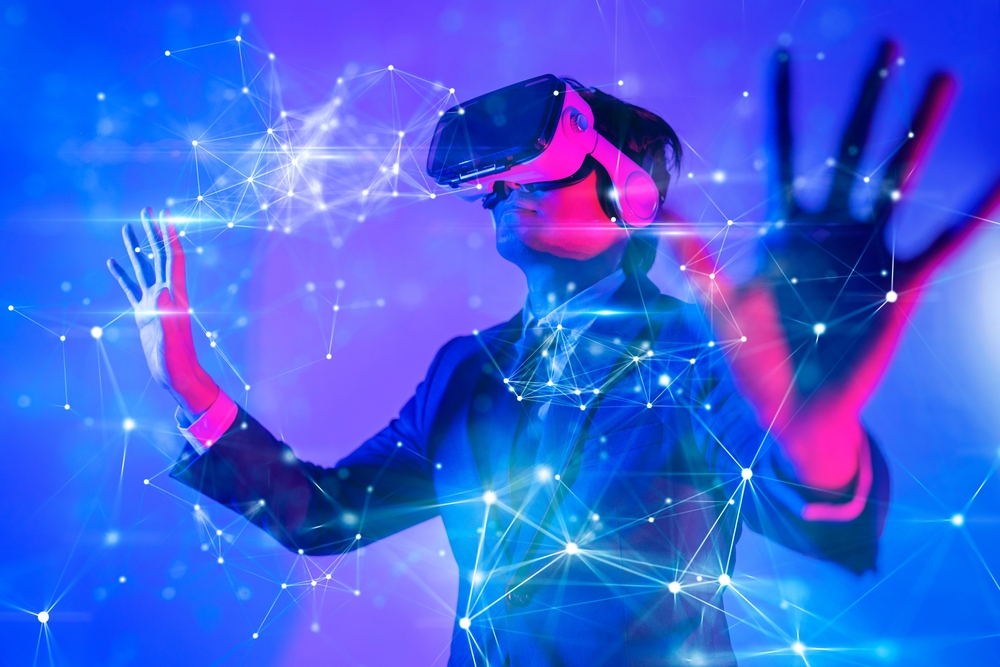Highlights:
- By providing sales reps with AR-powered tools, they can better explain complex products and services to customers, which can help to close deals faster.
- AR and VR can enhance customer engagement by providing immersive and interactive experiences that are impossible with traditional marketing methods.
The future of Augmented Reality (AR) and Virtual Reality (VR) in B2B is set to transform how organizations function and interact with their stakeholders.
AR and VR technologies enable businesses to create immersive experiences, improve training programs, visualize complex data, and streamline collaboration.
In this article, we will explore their revolutionary potential, looking at real-world applications and demonstrating how these technologies are altering industries, spurring innovation, and ushering in a new era of business interactions.
What is The Importance of AR and VR in B2B?
AR and VR can be used in various applications, including marketing and sales. Here are nine ways Augmented Reality and Virtual Reality are important in B2B marketing and sales:
- Enhancing product demonstrations: AR can create realistic product demonstrations that can be viewed from any angle. This can help customers better understand a product’s features and benefits, increasing sales.
- Improving customer engagement: AR and VR can create interactive experiences that engage customers in ways traditional marketing methods cannot. For example, AR can be used to create virtual product tours or to allow customers to try products before they buy them.
- Improving data collection: AR can collect data on customer behavior and preferences. For example, AR be used to track which products customers are most interested in or to gather feedback on product features and designs.
- Boosting product development: VR can simulate product prototypes, allowing businesses to test and refine their products without needing physical prototypes. This can save time and money while improving the final product.
- Enhancing remote collaboration: VR can bring remote workers together in a virtual space, allowing them to collaborate as if they were in the exact physical location. This can enhance communication and productivity while reducing travel costs.
Let’s explore the myriad opportunities Augmented Reality (AR) and Virtual Reality (VR) offer businesses, extending beyond gaming, storytelling, and entertainment.
AR/VR Is Transforming Industries Across the Board
The potential applications of AR/VR in improving business operations are extensive. Explore the examples of how entrepreneurs have already leveraged virtual reality and augmented reality to elevate their business practices and gain a competitive edge.
Retail: Retail businesses can leverage augmented and virtual reality to offer customers immersive buying and digital experiences.
By incorporating AR and VR, retailers can offer virtual fitting rooms, 3D clothing views, and in-home furniture assessments.
Virtual showrooms will replace traditional retail stores, and customers can try new haircuts or tattoos without long-term commitments.
Collaborating with Virtual Reality, developers can give retailers a competitive edge and deliver the best possible customer experience.
Manufacturing: Integrating AR and VR into the manufacturing sector will transform the employment landscape by introducing new opportunities. As a technician in the industry, you will benefit from virtual assistance provided by remote workers or devices. This assistance will significantly aid in error identification and marking, reducing reliance on guesswork during manual labor tasks.
Moreover, you will be able to streamline manufacturing processes, producing high-quality goods at reduced costs. This minimizes human errors and enhances training effectiveness while saving valuable time throughout the manufacturing workflow.
Marketing and amp; advertising: AR enhances customer interactions and drives purchase intent. Enjoyable mobile app content increases usage, while unique AR experiences surprise customers and competitors.
Onix-Systems utilize augmented reality to enhance promotional materials, showcasing vivid details through the Onix AR app. Users bring pages to life by aiming at their mobile devices. Immersive virtual experiences capture full attention, enabling targeted messaging. VR is the upcoming central computing platform, presenting a competitive landscape for marketers and brands.
Training: AR and VR offer enhanced safety and reduced errors for hands-on work. In a business setting, these technologies enable the development of tailored employee training programs, fostering confidence and competence.
For instance, trainee surgeons can utilize virtual and augmented reality to practice surgical procedures on 3D human replicas before operating on live patients. This provides a platform to learn from mistakes, refine skills, and gain valuable experience.
Conclusion
AR and VR technology offers a range of benefits that can improve productivity, safety, and customer experiences while reducing costs and increasing efficiency.
With continued advancements in technology, the possibilities for these technologies in various industries are vast and exciting, with many businesses looking to capitalize on the benefits of AR and VR in the years to come.
Gain valuable insights into modern technology by delving into our wide array of artificial intelligence whitepapers.





























































